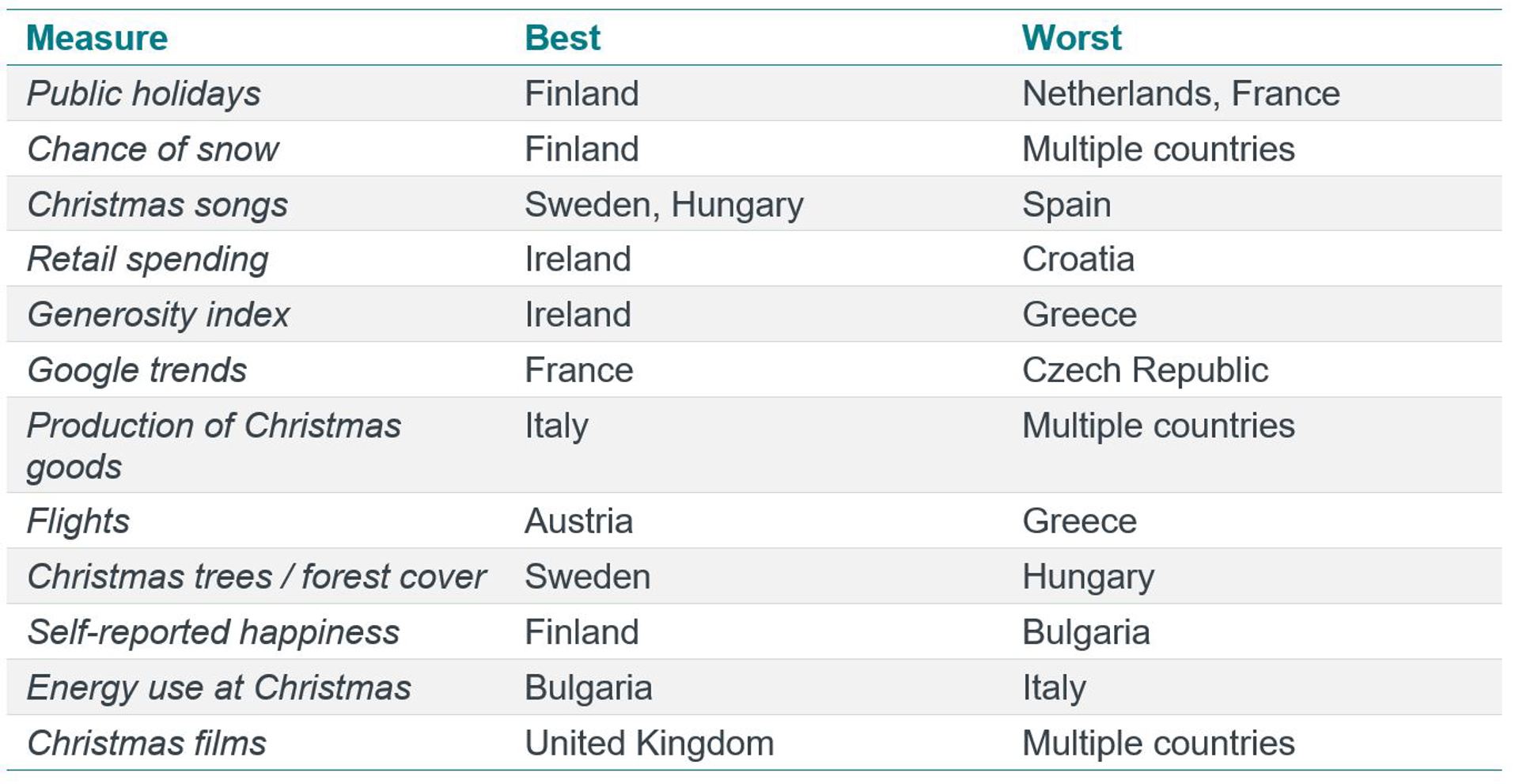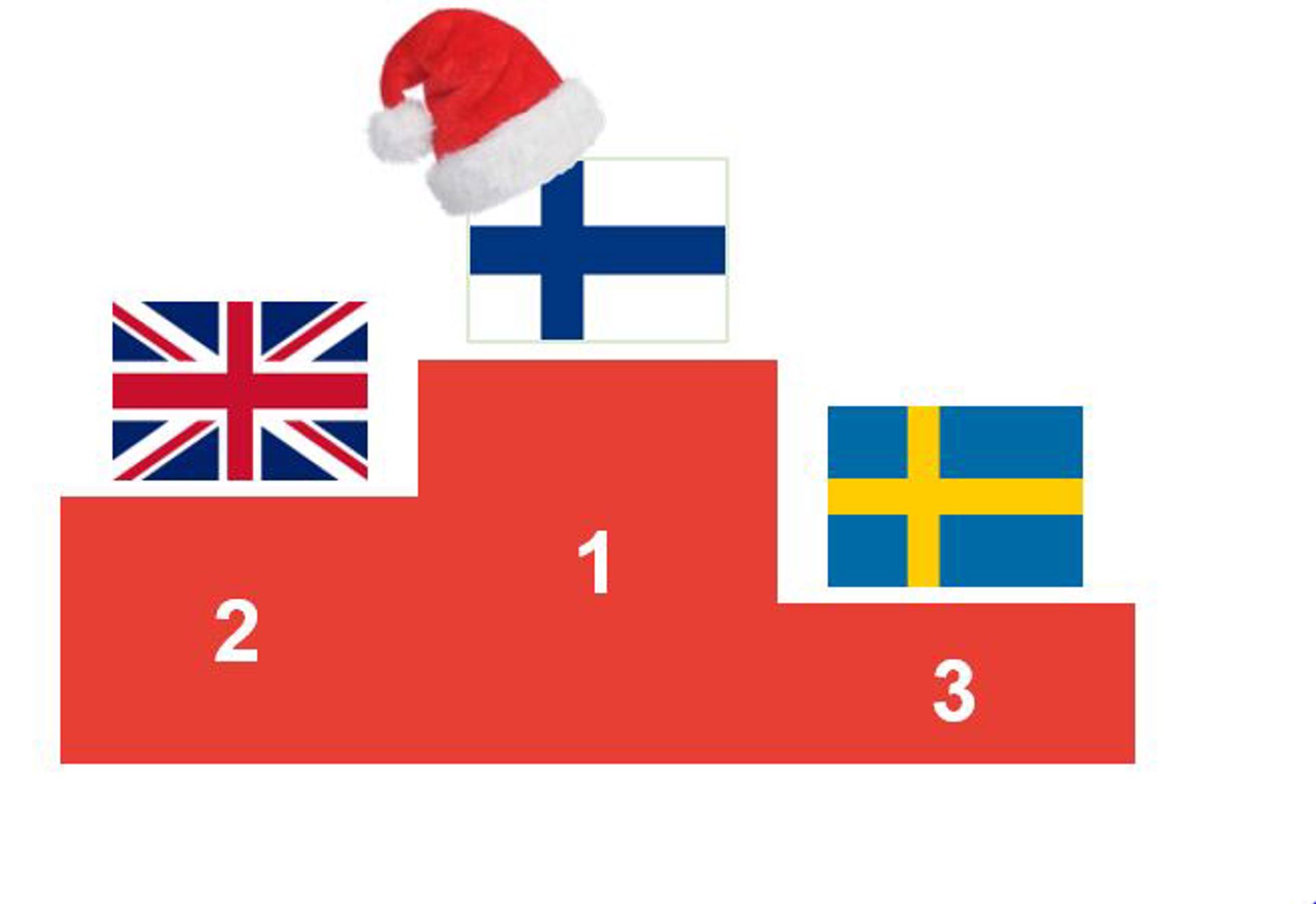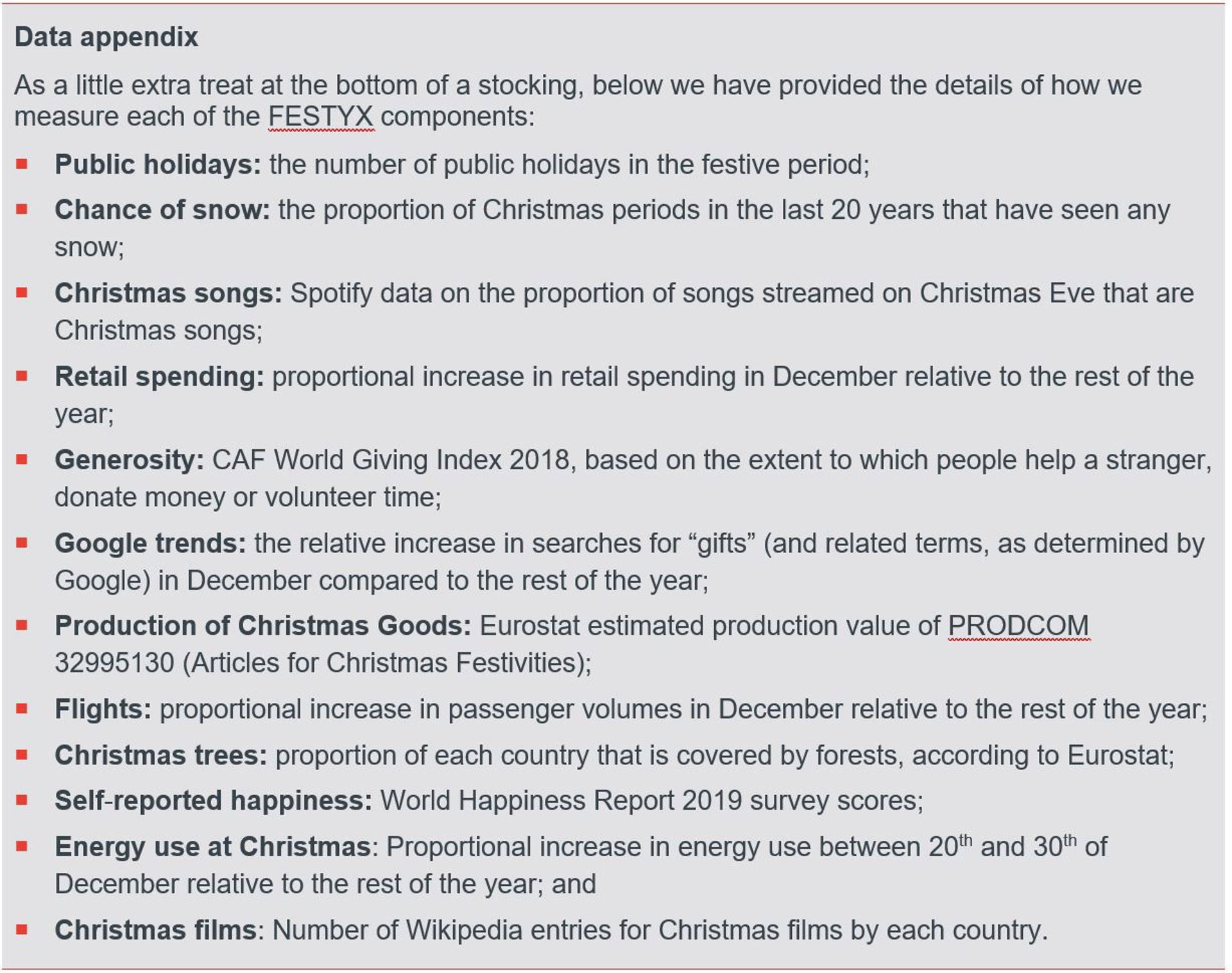Creating the FESTYX
Frontier’s offices are spread across Europe. And while we are keen to promote inter-office cooperation, Christmas time brings rivalry – just look at any family board game. Each office competes over which country is the “most Christmassy” in discussions so heated you could toast a marshmallow.
The Germans reckon their Christmas markets make them the most festive, while the UK points to its unrivalled Christmas media (think Love Actually). Ireland boasts of its generosity of spirit and our French colleagues don’t think you can look past the magic of Paris in the winter.
To settle the issue, we’ve devised a way of definitively determining which country in Europe is the most Christmassy. And the answer is, unsurprisingly, the place that Father Christmas himself calls home: Finland!
(How) do they know it’s Christmas time at all?
Over the past 20 years, as Frontier has expanded around Europe, one important question has lingered: which of our offices is in the most Christmassy country? As people, we all have our preferences and loyalties, but as economists, we know that only the data hold the true answer. Economists, of course, never disagree on what the data are actually saying.
At a time when statistical authorities are trying to quantify slippery notions such as wellbeing and quality of life, it seems like a perfect opportunity to finally put this age-old debate to rest. The Frontier elves have taken a deep dive into the data to resolve the question every Christmas film has failed to answer: what is the true (statistical) meaning of Christmas?
Making a list, checking it twice
Our approach was to rank countries on certain key Christmas metrics. To make the festive showdown a fair fight, the elves searched far and wide for the right measures which, once combined, like a perfectly balanced Christmas lunch, would capture all the dimensions of Christmas. The 12 Categories of Christmas were prioritised according to the following characteristics:
Availability of data
Scoping out what data are available is fundamental to any detailed investigation or rigorous analysis. Consistent, comparable and freely available data on a whole variety of topics is available from Eurostat. The EU’s statistics agency provides information about production and consumption at Christmas time and the environment of each member state – all vital components of what makes a country Christmassy. This makes it an ideal starting point for data collection.
However, there are some serious drawbacks with Eurostat data. Statistics are available only at EU level, so right away this rules out Norway (a bookies’ favourite) as well as Iceland and Liechtenstein.
Collecting data beyond the EU’s borders becomes an arduous task, as it’s not clear that statistics are recorded consistently across non-member states. And to be clear, for any Rip Van Winkles who might have woken from their slumbers and are catching up on Brexit developments, the UK remains in Eurostat. For now.
For some unknown reason, Eurostat does not explicitly define Christmas time, recording the relevant statistics instead on a monthly basis. As a result, we have to assume that the Christmas period begins on December 1st and ends abruptly on December 31st.
Universality
While the general themes of Christmas are universal, there are some country-specific takes. Trying to compare these different traditions is like comparing apples and oranges, or lingonberry jam and panettone to be more precise. Still, we’re lucky to be confining our exercise to Europe. A comparison of worldwide food choices would have brought on instant indigestion. For example, families in Western Europe might typically tuck into roasted meats and vegetables, but in Japan fried chicken is widely considered the traditional Christmas meal.
Frontier Rating of SpiriT (FROST)
The FROST rating is a proprietary, business-sensitive dataset that Santa has barred from the public domain. All we can say is that it is a complex formula for ranking what composes ‘festive spirit’.
Verdict
Of course, this means we have been forced to omit some key Christmas metrics. Our German colleagues were desperately disappointed that we weren’t able to accurately count the number of Christmas markets in each country in the EU. However, even if had been able to do so, these markets are not necessarily comparable. Is a Christmas market in a rural corner of northern England less Christmassy than the one in Munich? Of course, locals will always argue that theirs is the most festive. No prizes for guessing which Christmas market our Cologne office reckons is Europe’s best…
Based on the above, we have chosen 12 categories of Christmas. Twelve seemed appropriate as it is the most Christmassy of numbers. Neither too small nor too big a figure, it allows for a suitably broad range of criteria by which to judge country-by-country Christmasness. Our chosen measures are based on production (Christmas goods and films), consumption (retail spending; googling for gifts; holiday flights and energy use), environment (chance of snow and Christmas trees) and festive spirit (public holidays; Christmas song streams; happiness and generosity).
We consider festive spirit and consumption to be the most important benchmarks because they take into account what each country chooses to do at Christmas time and how well they tap into a Christmas feeling. Production is arguably less important, but if no one was making the Christmas goods, how would we celebrate? Similarly, a country’s environment is not considered quite as crucial: it might be that very festive folk are hostage to their geography.
With our 12 Categories of Christmas finalised, we set about combining these to produce our Christmas Index, FESTYX (the Frontier Economics STandardised Yuletide IndeX).

Walking in a Winner Wonderland
Now that the FESTYX data drives have finished whirring, the Frontier elves can report that Finland has been crowned the Yuletide King of Christmas, and Croatia the Scrooge! The UK took second place and Sweden third. With Denmark ranked fifth, the Nordic countries look to be the runaway winners for consistent Christmas cheer.

So what is driving these results? Finland’s success stems from its consistency: the country was ranked first or second in half of our 12 Categories of Christmas. With the most snow, most public holidays in the festive season and the most joyful people, Finns are obviously spending a lot of their time frolicking merrily in the snow. It doesn’t get much more Christmassy than that.
Nonetheless, the statistics can tell us only so much about how countries approach the winter holiday season. We welcome critiques and peer reviews of our methodology and look forward to refining it as the data improve.
With that, the Frontier elves would like to wish all of our clients, partners and colleagues, Christmas Kings and Scrooges alike, a very Merry Christmas – regardless of where they are located in the world, or how Christmassy that place may be.
A full rankings table is shown below:





